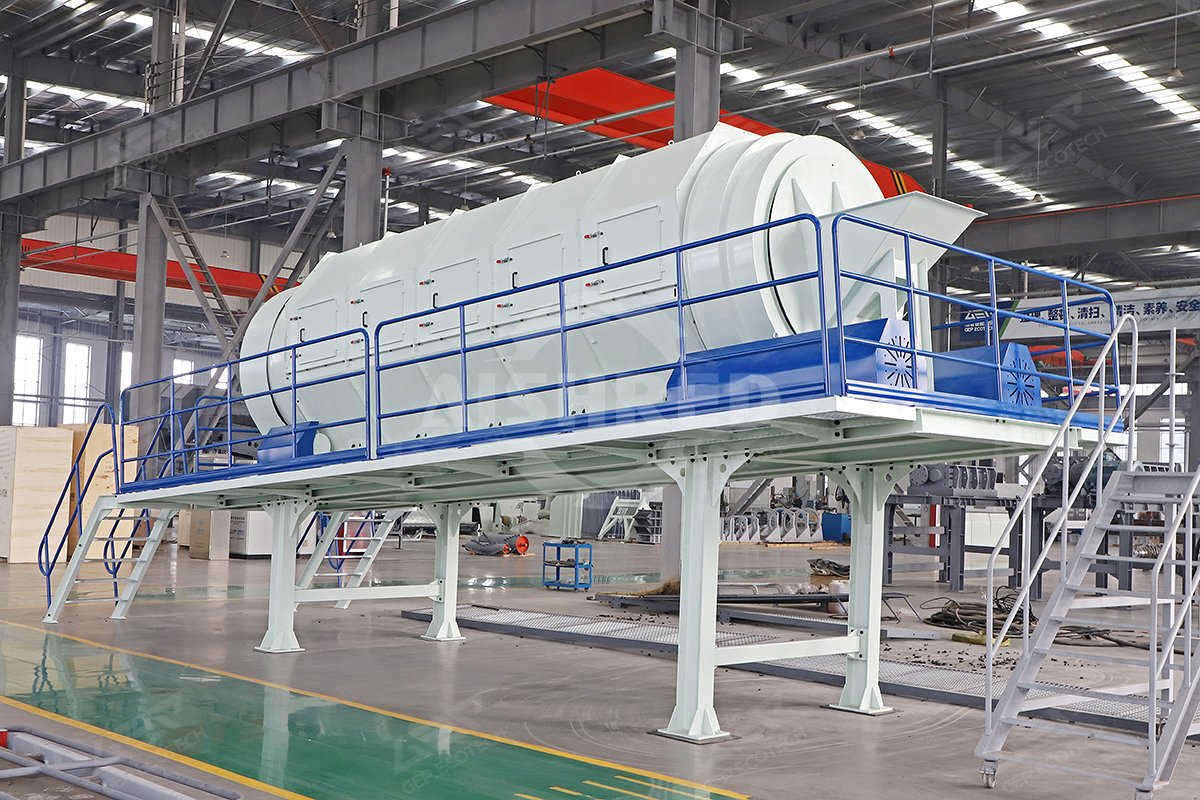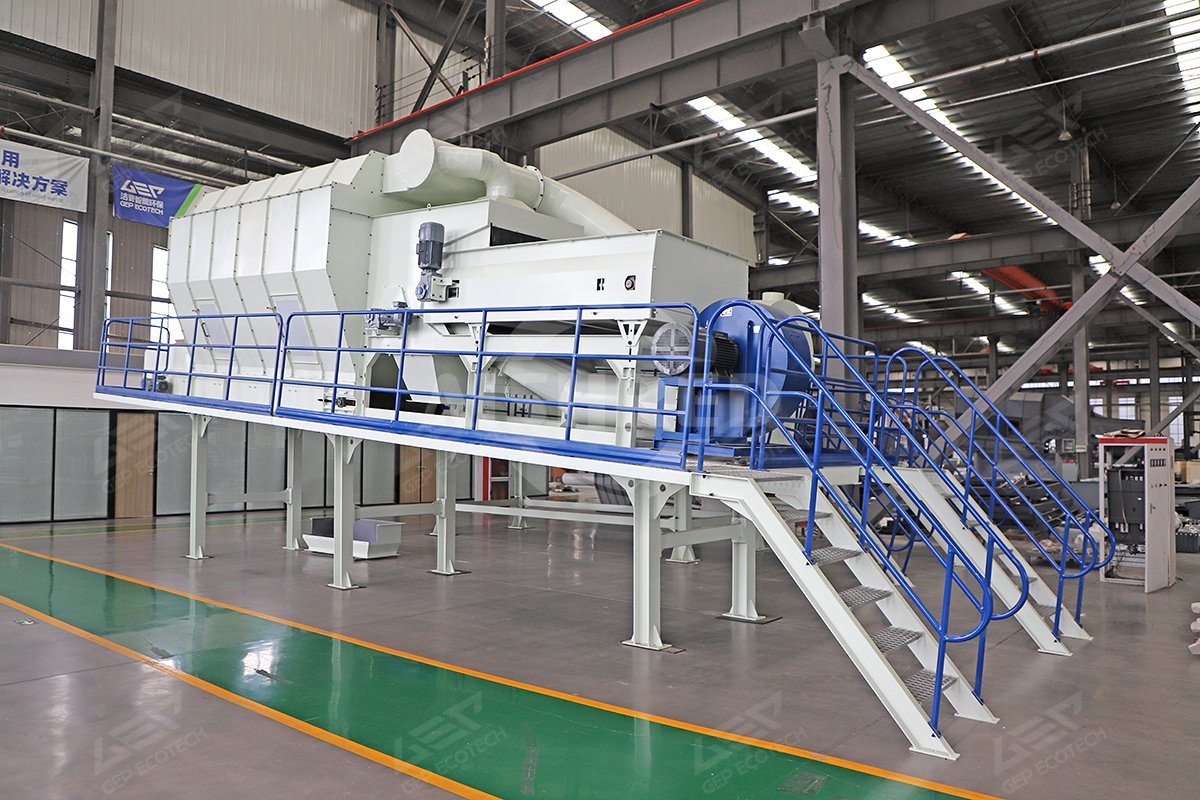As the service life of municipal landfills extends, large volumes of aged waste have accumulated in legacy landfill sites. This type of waste, having undergone years of natural degradation and compaction, presents a high degree of complexity in composition and is difficult to process. Despite these challenges, aged landfill waste still retains certain resource value. Given the diverse composition, sorting difficulty, and mounting environmental pressures, the use of professional, high-efficiency sorting equipment has become a critical pathway to achieve the goals of volume reduction, harmless treatment, and resource recovery.
In the aged waste treatment process, the trommel screen and wind sifter act as core sorting equipment. Working in tandem, they enable the effective separation and recovery of valuable components from mixed waste streams.
Trommel Screen: Efficient Screening for Removal of Soil and Humic Matter

Working Principle:
Driven by a motor, the rotating cylindrical drum causes waste materials to tumble and advance. Smaller particles such as soil and humified organic matter pass through the perforated screen, while larger materials are discharged from the end of the drum. This achieves particle-size-based grading and separation.
Features:
- Rolling transport mechanism with low friction and minimal wear; screening apertures are resistant to clogging.
- Integral shaft support design ensures stable operation and high screening efficiency.
- Fully enclosed structure with dust and odor control interfaces for environmental protection.
- Energy-efficient transmission using a reducer system with high efficiency and low power consumption.
Wind Sifter: Density-Based Separation for Recovering Combustible Materials

Working Principle:
Based on aerodynamic principles, the air separator classifies materials according to their density. Light materials (e.g., plastics, paper) are carried away by airflow to the light-fraction outlet, while heavier materials (e.g., bricks, stones, metals) fall due to gravity and are discharged separately.
Features:
- Variable-frequency drive allows flexible adjustment of wind speed.
- Modular design enables easy maintenance and integration.
- High separation purity, improving the quality of downstream processing.
- Minimal wear parts, ensuring long service life and reliability.
Downstream Applications of Sorted Materials
- Light combustible fractions (plastics, paper, cardboard, sponge, etc.): Can be further shredded and compressed into Refuse-Derived Fuel (RDF) for use in cement kilns or industrial boilers as an alternative fuel.
- Inert materials (sand, glass, bricks): Can be used as landfill cover, road base materials, or processed into recycled construction materials.
- Organic humic matter: If contaminant levels are controlled, it may be used in aerobic composting or anaerobic digestion.
- Recoverable metals: Can be further refined through magnetic separation or eddy current sorting.
- Residuals: Non-recoverable fractions may be disposed of through sanitary landfilling or incineration.
GEP ECOTECH specializes in the development and manufacturing of solid waste resource recovery equipment. For aged landfill waste treatment, we offer integrated sorting system solutions centered on trommel screen and wind sifter. Our systems help clients achieve efficient waste volume reduction, environmental safety, and maximum resource utilization.
To learn more about our products or request a customized solution, please feel free to contact us.

